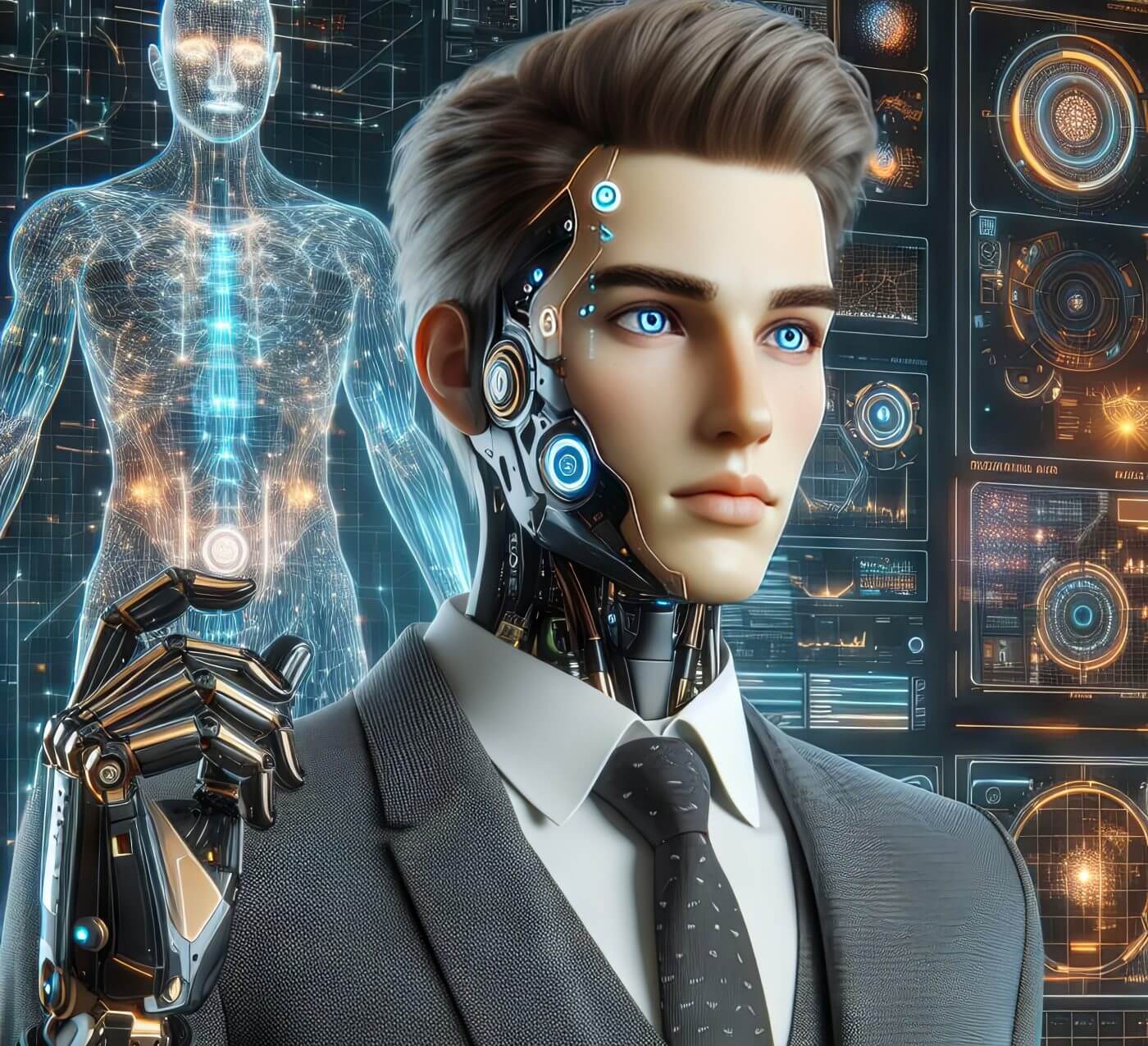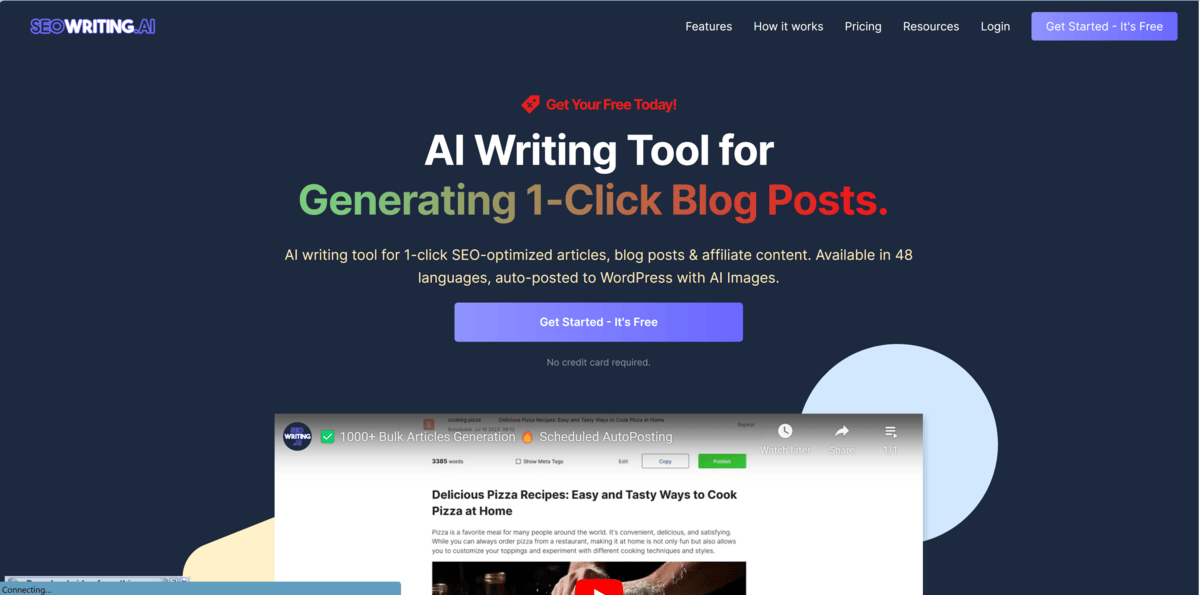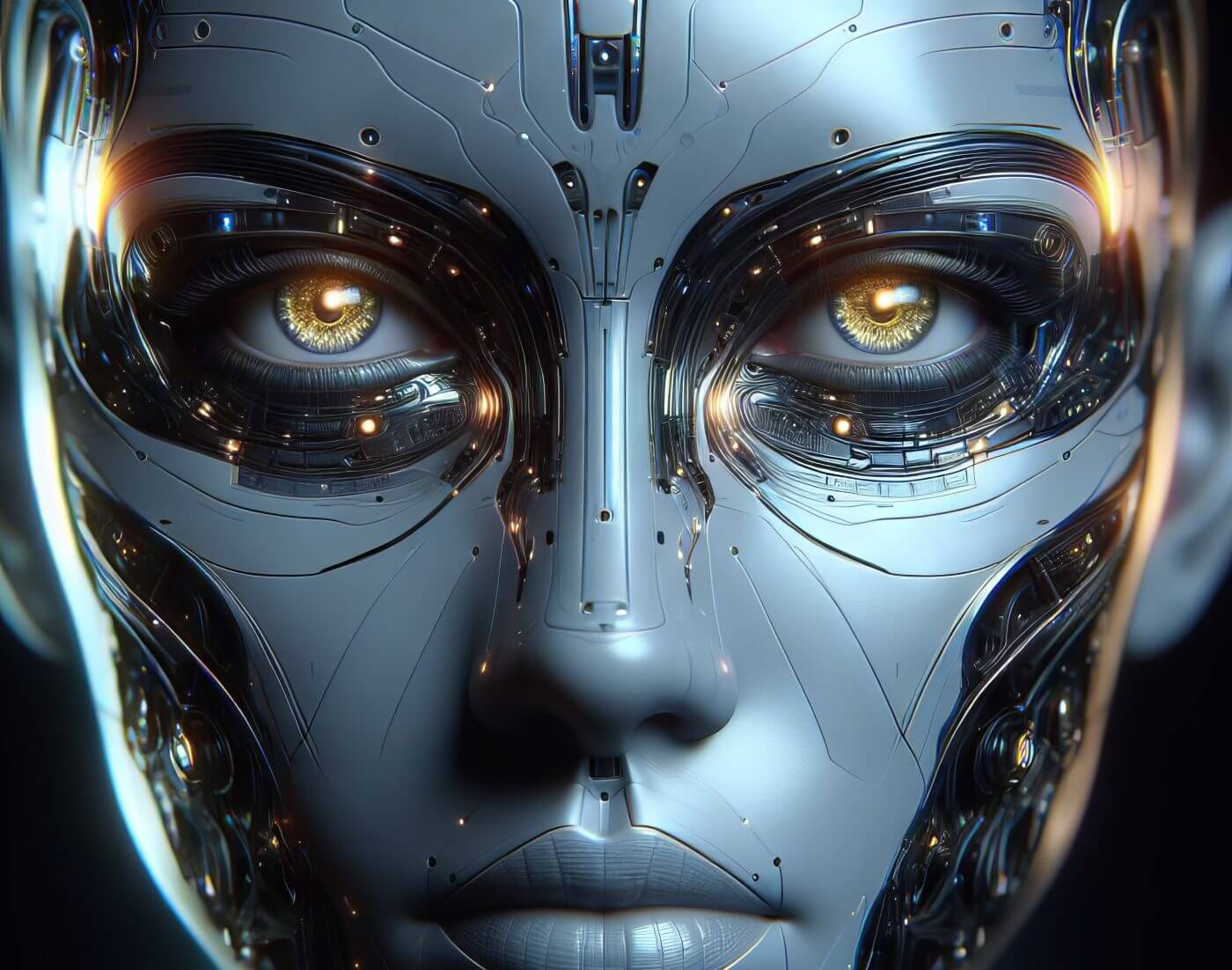Generative Pre-trained Transformer 5 (GPT-5), a pioneering achievement by OpenAI, marks a new era in artificial intelligence. As a successor to GPT-4, GPT-5 exemplifies the pinnacle of natural language processing and machine learning. OpenAI’s expertise and authority in AI development have been instrumental in pushing the boundaries of what AI can achieve, making GPT-5 a significant milestone in the AI landscape. This model’s capabilities not only demonstrate technical advancement but also pave the way for innovative applications that could reshape various aspects of our society and industries.
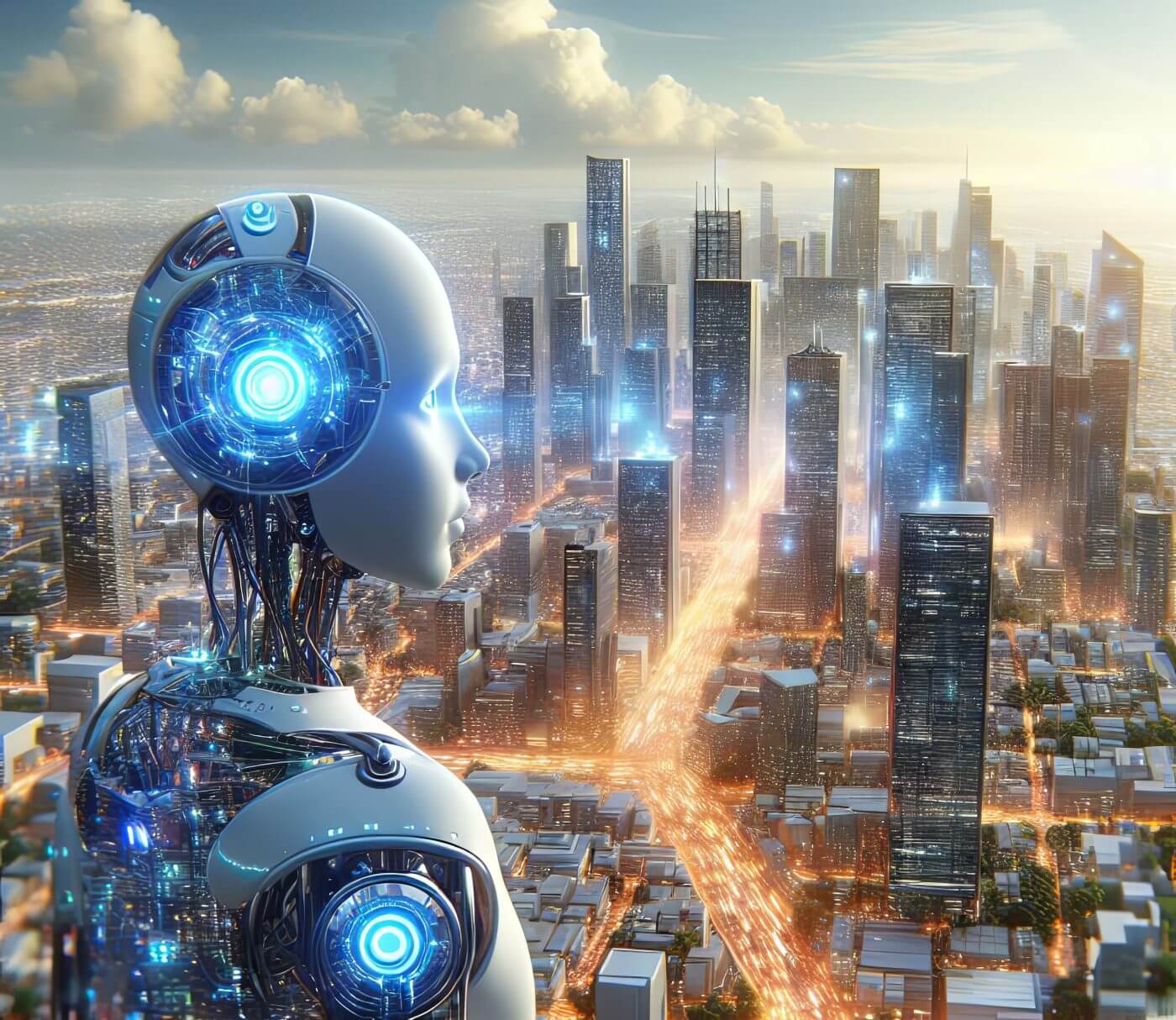
The Evolution of OpenAI’s Language Models
Recent developments in OpenAI’s suite of language models, as highlighted by Aman Gupta in Livemint, emphasize the significant strides being made with GPT-5. OpenAI CEO Sam Altman has outlined key features and enhancements in GPT-5 that are generating considerable interest in the tech community. These include advanced personalization capabilities and improvements in the underlying Generative Pre-trained Transformers (GPTs). Such advancements are crucial steps towards achieving Artificial General Intelligence (AGI), although Altman notes that reaching AGI by 2024 remains a challenging goal.
GPT-5’s Enhanced Personalization and Technological Advancements
GPT-5’s development focuses on offering more refined personalization features over its predecessor, GPT-4. These enhancements are expected to significantly improve user interaction, making the AI model more adaptable to individual needs and preferences. The advancements in GPT-5’s transformer technology are also indicative of OpenAI’s commitment to pushing the boundaries of AI capabilities, bringing the technology closer to the realm of AGI.
OpenAI’s Broader Commitment to AI Advancement
The introduction of GPT-4 Turbo and the announcement of a GPT store to support verified developers are part of OpenAI’s broader strategy to foster AI innovation. These initiatives underline the rapidly evolving landscape of AI and its growing integration into various sectors, from healthcare and finance to education and creative industries.
Key Takeaways from GPT-5’s Advancements
- Sophisticated Language Generation: GPT-5 sets a new benchmark in natural language processing with its sophisticated language generation capabilities.
- Potent Machine Learning: Featuring a finely-tuned neural network, GPT-5 showcases potent machine learning capabilities.
- Unprecedented Interaction Levels: With advanced neural networks and deep learning, GPT-5 is poised for unprecedented levels of interaction and service.
- Wide-ranging Applications: GPT-5’s applications extend from enhancing chatbot responsiveness to refining speech recognition technologies.
- Human Language Nuances: Its ability to mimic human language nuances positions GPT-5 as a revolutionary tool in AI.
What is GPT-5?
GPT-5, short for Generative Pre-trained Transformer 5, is an advanced AI language model developed by OpenAI. It represents the latest evolution in a series of generative models designed to understand and generate human-like text. Building upon the achievements of its predecessor, GPT-4, GPT-5 stands out with potentially trillions of parameters, enhancing its capacity for deeper context comprehension, superior language generation, and improved memory and reasoning abilities.
Definition and explanation of GPT-5
GPT-5, also called Generative Pre-trained Transformer 5, is a cutting-edge tool that uses modern language processing techniques. It has learned from trillions of pieces of data, making it great at generating text and recognizing speech, almost like a human.
What Makes GPT-5 Different?
GPT-5 stands out because it learns more deeply and can adapt better than earlier versions. Its large network allows it to be used in many fields like healthcare and finance, thanks to its improved understanding and prediction skills.
Key features and capabilities of GPT-5
Looking into GPT-5, we find many features that set new expectations for AI. For example, it can handle multiple languages, which could lead to better and more flexible communication tools. It can also solve complex problems in business, improving efficiency. GPT-5 will likely change creative industries with its ability to generate art and speed up our move towards a world where machines work smarter.
As we look forward to GPT-5, we must remember to use it responsibly. This level of AI sophistication requires us to think about ethics as well as technology. Used wisely, GPT-5 is not just a tech wonder but also a step towards a future where machines and humans work together more closely.
The Technology Behind GPT-5
GPT-5 is a mix of groundbreaking technology and methods. It shows our commitment to exploring what’s possible in AI, combining the latest in machine learning and language processing.
Understanding the technical aspects of GPT-5
GPT-5 is leading us into a new era of language processing advancements. It uses a mix of neural networks and deep learning models for an impressive understanding of language and text creation, like something from a sci-fi story.
Machine learning and neural networks in GPT-5
Our approach uses a sophisticated type of neural network, optimized for handling sequences of data. GPT-5’s network can understand context in long text passages, setting new standards for machine intelligence.
GPT-5’s Training and Data
GPT-5’s learning is impressive. Trained on a massive dataset, it shows our focus on using lots of data to add depth to the AI’s understanding of language.
- Training on Wide-ranging and Diverse Datasets
- Sophisticated Pattern Recognition
- Finely-tuned Model Parameters
Through continuous data training and improving our algorithms, we make sure GPT-5 isn’t just great at creating language but also represents OpenAI’s commitment to shaping the future of language processing.
GPT-5’s Impact and Applications
We’re seeing the big impact of GPT-4, a top-notch AI language tool from OpenAI, in many areas. This tool is changing the future with its improved language processing. It’s more than just a smart machine; GPT-5 will be a symbol of innovation, improving areas like healthcare and finance with its learning abilities.
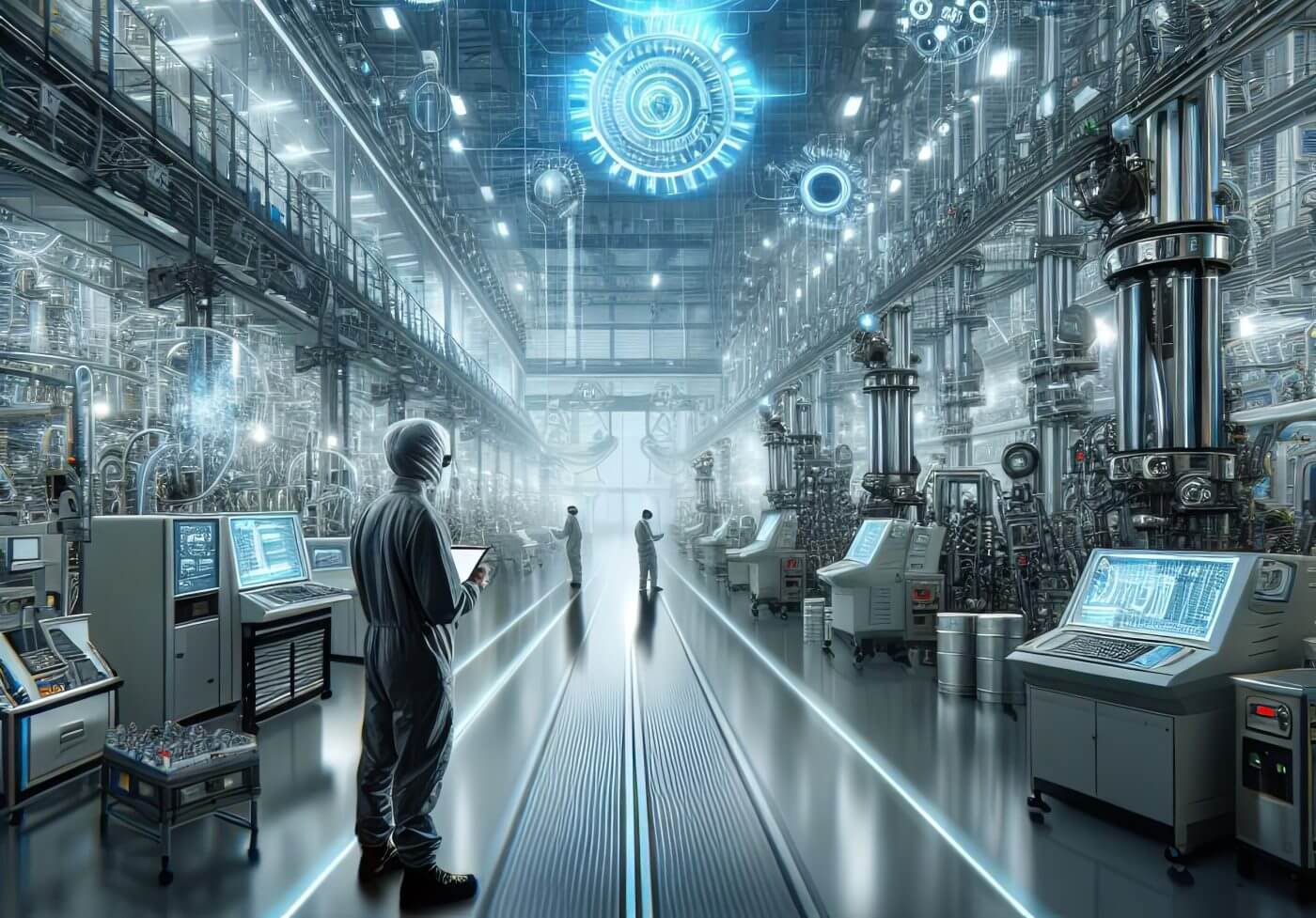
Use cases of GPT-5 in different sectors
- Healthcare: GPT-5 will be a game-changer in healthcare. It looks at a lot of patient data to help make personal treatment plans and speed up diagnoses. This is saving lives and making things run smoother.
- Finance: In finance, GPT-5 will be great at giving investment advice and predicting market trends. It helps traders and analysts by going through complex data to find patterns and make predictions that might be hard for people to see.
- Customer Service: GPT-5 will also improve customer service. It powers chat systems that talk and understand like humans. This makes customers happier and solves their problems faster.
Examples of GPT-5 applications in real-world scenarios
We’re already seeing GPT-4 make a difference. Apart from healthcare and finance, it’s helping in international relations and education. It’s affecting almost every industry by changing how we do business, solve problems, and do research.
In short, GPT-5, or OpenAI GPT-5, is more than just new tech. It will open doors to many new possibilities that will shape our future. As we keep using GPT-5, we’ll understand and use it better in AI, leading to new AI-powered solutions for different industries.
GPT-5 and Content Creation
The anticipated introduction of GPT-5 is set to revolutionize content creation. Utilizing cutting-edge machine learning techniques, this AI model is expected to produce content that closely mimics the intricate understanding of human writers. Its broad language generation skills will enable effortless crafting of stories, articles, and reports.
The Future of Automated Writing and Creativity
As we look toward the future, GPT-5’s integration with creative AI suggests a promising combination of human creativity and artificial intelligence. The evolution of automated writing will adapt to various styles and audiences, continually enhanced by advancements in natural language processing. This progress ensures that the craft of content creation is enriched, not replaced, by our partnership with GPT-5.
The future of automated writing and creativity with GPT-5
Committed to exploring the latest developments in natural language processing, we eagerly anticipate the release of OpenAI’s GPT-5. Our aim is to provide an enriched content experience for our readers, constantly exploring new frontiers of creativity in AI.
Ethical Considerations and GPT-5
As we prepare for the arrival of GPT-5, the importance of addressing ethical considerations in AI becomes paramount. This new technology brings not only advanced capabilities but also complex moral challenges that require careful consideration.
In our pursuit of fairness and the reduction of biases in AI, it’s vital to assess the capabilities of GPT 5 with a critical lens. Our commitment to ethical AI thrives on the back of transparent standards and rigorous regulations that strive to counterbalance the risks associated with these powerful machine learning tools.
Discussing the ethical implications of GPT-5
As we prepare for the arrival of GPT-5, the importance of addressing ethical considerations in AI becomes paramount. This new technology brings not only advanced capabilities but also complex moral challenges that require careful consideration.
Addressing biases and fairness in AI with GPT-5
In anticipation of GPT-5, we are focused on ethical AI practices, critically examining its potential capabilities. Our commitment involves setting clear standards and stringent regulations to balance the risks associated with this powerful technology.
Understanding the Ethical Implications The introduction of GPT-5 brings considerable ethical implications. We’re dedicated to ethical decision-making in AI, ensuring that our approaches consider not only technical aspects but also the societal impacts, striving for fairness and impartiality.
Addressing Biases and Upholding Fairness As GPT-5 approaches, we’re preparing to tackle potential biases in AI. Through regular reviews of our algorithms and incorporating human oversight, we aim to prevent biased data interpretations and move towards a truly ethical AI system that champions fairness.
Our stance on the application of AI language models is firm: responsible usage is essential. Adhering to OpenAI’s ethical guidelines for GPT-5, our goal is to responsibly leverage this technology for societal benefit while minimizing risks. We envision a future where the autonomous capabilities of GPT-5 are seamlessly blended with human guidance, ensuring technology assists rather than dictates our path forward.
The Benefits of Using GPT-5
We’re gearing up to integrate the exciting new GPT-5 technology into our work. This upcoming tool from OpenAI goes beyond traditional AI with its impressive efficiency and accuracy. As we explore its uses, it’s clear that GPT-5 will be a big step forward in AI.
Efficiency and Accuracy Improvements with GPT-5
Our commitment to top-notch AI is shown by using GPT-5 to improve user experiences. The benefits are huge, from faster data processing to better understanding of language, showing just how far GPT-5 has taken machine learning. It’s also very accurate, able to handle complex tasks with precision, a big step in understanding and processing language.
GPT-5’s Contribution to AI Research and Development
GPT-4 is greatly influencing AI research and development. As a key part of AI development, it’s pushing learning and adaptability to new levels. With its deep learning based on transformer architecture, we’re not just watching AI grow; we’re actively shaping it. Looking ahead, we’re excited about creating more capable and independent AI systems with GPT-5’s help.
Challenges and Limitations of GPT-5
While exploring GPT-5, we must recognize the technical and practical challenges of using such advanced AI. OpenAI’s progress in neural networks and deep learning sets high standards, but it also brings complexity. Fitting GPT-5 into existing systems is a big task, requiring strong solutions for both compatibility and computing needs.
Technical and practical challenges in implementing GPT-5
Incorporating GPT-5 into our tech comes with its own set of challenges. These include managing the large scale of its neural network and the high processing power it needs. We also have to think about the cost of using such a sophisticated system and how it balances with the benefits it offers.
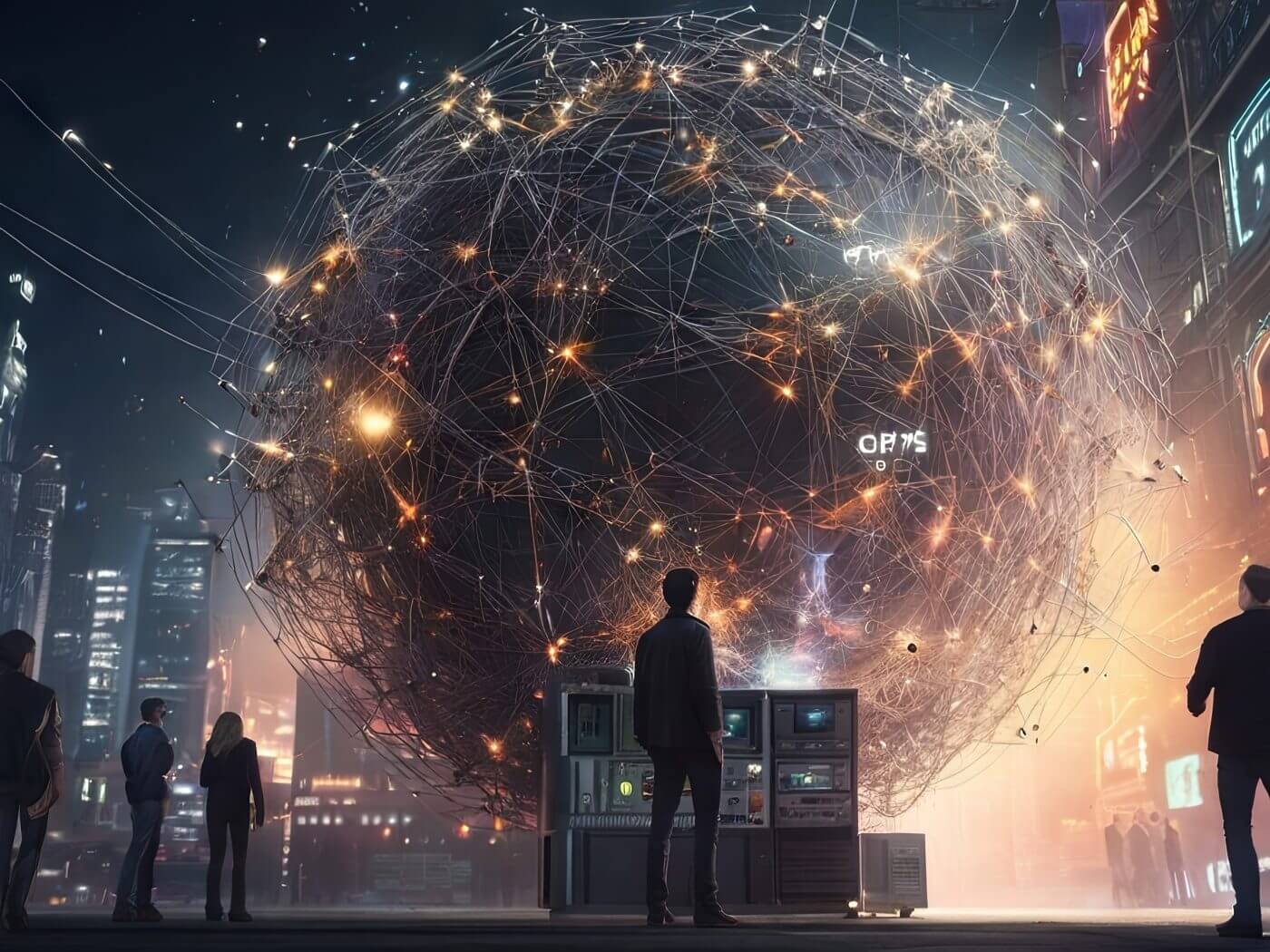
Limitations in GPT-5’s understanding and responses
Despite GPT-5’s advanced language generation and learning skills, it still has some gaps in fully grasping human communication’s complex nature. While GPT-5 tries hard to understand our speech and ethical decisions, there are still challenges. We, as developers and users, need to keep improving GPT-5, helping it grow and overcome these obstacles. Understanding and tackling these challenges is key to making the most of GPT-5.
GPT-5 for Businesses: Catalysing Growth and Driving Innovation
Businesses can use GPT-5 to better their customer service, make data analysis faster, and improve decision-making. By adding GPT-5 to their systems, companies can make customer interactions more personal, leading to higher satisfaction and loyalty.
GPT-5 for Business Growth and Innovation
For example, in finance, firms use GPT-5 to understand complex data, helping them make better investment decisions and reduce risks. In retail, GPT-5 personalizes shopping experiences by analyzing customer behavior to suggest products, boosting sales and customer return rates. In healthcare, GPT-5 helps improve patient care with better diagnostics and treatments, leading to better health outcomes.
These examples show how GPT-5 may help businesses grow and innovate. Our investment in AI tools like GPT-5 shows our commitment to excellent service and operations. GPT-5 is more than just an AI model; it’s a chance for us to enter a new era of efficiency and opportunity.
GPT-5 for Personal Use
As the digital age progresses, Artificial Intelligence is increasingly impacting our personal lives. The upcoming GPT-5, developed by OpenAI, is a testament to how advanced learning and language processing can simplify our daily activities. GPT-5 isn’t just for organizations; it’s also becoming useful for individual tasks.
Using GPT-5 in Everyday Life
Imagine an AI tool that can help organize your schedule, manage messages, or support your learning goals. GPT-5 will redefine personal productivity, making it more tailored to your needs. Whether it’s for learning a new language, research or writing, GPT-5 is equipped to assist with various tasks, all while boosting your productivity.
How GPT-5 Can Improve Personal Efficiency
GPT-5 uses advanced language understanding to make tasks easier and more efficient. Here’s how it can take personal productivity to the next level:
- Schedule Management: GPT-5 can automate your scheduling, set reminders, and arrange meetings, giving you more time for creative or leisure activities.
- Personalized Learning: GPT-5 customizes learning materials to fit your style and speed, making education more flexible and accessible.
- Multilingual Communication: GPT-5 helps overcome language barriers, enabling easy communication in different languages, ideal for travel or personal development.
- Creative Projects: GPT-5 can assist in writing blogs, poetry, or other creative work, enhancing your creativity.
In summary, GPT-5 is not just about improving productivity; it’s about creating a smarter, more connected world for individuals. Its practical applications are growing and evolving to meet the unique needs of our personal lives, making our interaction with technology more intuitive and responsive.
Future Developments in GPT-5
As we move further into a digital future, GPT-5, an upcoming AI language model from OpenAI, is set to play a crucial role. This model goes beyond current AI capabilities, offering a glimpse into a future where AI’s learning and understanding are constantly advancing. Our focus now is on exploring and guiding GPT-5’s potential path, anticipating groundbreaking developments and advancements in natural language processing.
Predictions and Expectations for GPT-5’s Evolution
We’re on the edge of seeing significant updates to GPT-5 that promise to revolutionize AI. Future versions are expected to bring more context-aware interactions, breaking current limits of AI. These updates might include a more precise and adaptable neural network, enhancing GPT-5’s ability to understand and replicate human conversation nuances.
Potential Upgrades and Future Versions of GPT-5
Imagining GPT-5’s future upgrades is like venturing into uncharted territory. We expect these updates to address ethical AI challenges, ensuring that GPT-5 is not only intellectually advanced but also ethically responsible. Future improvements might include:
- Better handling of task-specific applications
- More empathetic response algorithms
- Stronger safeguards for ethical use
- Continuous learning for up-to-date knowledge
Our commitment to advancing GPT-5 is about creating an AI future that is as transformative as it is feasible. With these developments, GPT-5 is set to reshape tomorrow’s AI landscape.
GPT-5’s Influence on Future AI Trends
GPT-5 stands at the forefront of shaping future AI trends. Its capabilities in machine learning, neural networks, and language processing are guiding the direction of AI research. GPT-5’s impact will be felt not only in upcoming projects but also in shaping our vision for futuristic AI.
GPT-5’s Broader Societal and Technological Impact
The influence of GPT-5 extends beyond technology to sectors like healthcare, education, and urban planning. OpenAI’s ethical AI approach ensures this journey towards an AI-enhanced reality is carefully managed to benefit society as a whole.
Conclusion
GPT-5’s transformative potential goes beyond technology and business, affecting how we interact with society. OpenAI’s advancements in machine learning and neural networks through GPT-5 mark a shift toward more sophisticated, autonomous systems that can think and interact in ways previously thought unique to humans.
Summarizing GPT-5’s Impact GPT-5 heralds significant changes in AI language models. Its capabilities, blending predictive text with near-human language understanding and ethical decision-making, represent not just an improvement but a major advancement. The synergy between GPT-5’s abilities and human creativity is preparing us for a future where the line between human and artificial cognition becomes increasingly blurred.
Staying Updated with GPT-5: As we enter a new era shaped by GPT-5, staying informed and engaged with its progress is crucial. By doing so, we ensure that technology evolves alongside ethical standards, laying the foundation for a more interconnected world. Let’s stay vigilant and excited, as the story of GPT-5 is also our story, and it’s just beginning.
FAQ
What is GPT-5?
GPT-5 stands for Generative Pre-trained Transformer 5, and it is an advanced AI language model developed by OpenAI. It is designed to understand and generate human-like text, offering significant improvements in language comprehension, problem-solving, and autonomous functionality compared to its predecessors.
How does GPT-5 differ from earlier models like GPT-4?
GPT-5 represents an evolution in AI, differentiating itself with potentially trillions of parameters, which may allow for an enhanced understanding of context, superior language generation abilities, and better memory and reasoning skills. It is expected to have improved efficiency in handling intricate tasks and may possibly include features such as specialised internal autonomous agents and advanced observation learning.
What are the key features of GPT-5?
Some anticipated key features of GPT-5 include a larger model size for improved language understanding, a considerable enhancement of its ability to generate human-like text and speech, improvements in understanding multiple types of input, and advancements in mathematical reasoning and problem-solving.
What technological advancements support GPT-5?
GPT-5 is built on the latest advancements in machine learning and deep learning, specifically within the framework of a neural network architecture known as transformers. Its development relies on extensive training with huge datasets, which are processed and analysed by sophisticated algorithms to advance the model’s language processing functions.
In which industries can GPT-5 be applied?
GPT-5 has versatile applications that can benefit various industries including healthcare, finance, education, customer service, and scientific research. It can assist healthcare professionals in diagnostic processes, help in financial analysis, transcend language barriers in international relations, and support personalised educational content.
How will GPT-5 transform content creation?
GPT-5 is expected to radically transform content creation by automating writing processes, generating content with a high degree of creativity, and allowing for a more nuanced engagement with material. It may also enhance and assist in creative industries such as journalism, literature, and other areas requiring content generation.
What are the ethical considerations regarding the deployment of GPT-5?
With the introduction of GPT-5, there are important ethical considerations to address, including ensuring the AI model is free of biases, maintaining fairness in AI outputs, and setting up strict ethical guidelines and auditing processes to prevent the misuse of the technology.
What benefits can we expect from GPT-5?
The use of GPT-5 is anticipated to lead to significant improvements in efficiency and accuracy within AI systems, helping sectors across the board in streamlining operations and effectively simulating complex human tasks. It also has the potential to become a pivotal element in AI research and further developments.
Are there any challenges or limitations associated with GPT-5?
Yes, there are challenges and limitations associated with GPT-5 that include high computational requirements, integration complexities with existing systems, and the financial viability of deploying such an advanced AI. Additionally, GPT-5 may still encounter difficulties in fully grasping the nuances of human communication and ethical decision-making.
How can businesses utilise GPT-5?
Businesses can leverage GPT-5 to automate processes, enhance customer service, and perform data analysis for better decision-making. Integrating GPT-5 into business operations can provide a competitive edge by increasing productivity and enterprise efficiency.
What are the potential personal uses for GPT-5?
On a personal level, GPT-5 has the potential to serve as a personal assistant, assist with language learning, enhance educational experiences, and support hobbies such as music composition or creative writing. It can be utilised to augment individual productivity and learning through bespoke AI-powered tools.
What future developments can we expect in GPT-5?
Continuous improvements in GPT-5 may include upgrades in interactivity, domain adaptability, problem-solving abilities, and sensory perception enhancements. Future iterations will likely address current limitations and introduce functionality to ensure GPT-5 remains at the forefront of AI technology.
How will GPT-5 influence future AI research and societal trends?
GPT-5 is expected to drive future AI research, setting a new standard for language models with enhanced comprehension and reasoning capabilities. It may have a significant societal impact, influencing the automation of jobs, reshaping human-device interactions, and offering novel solutions to industry challenges.

Bhetaludu has fresh tech news and cool travel tales. He covers gadgets and faraway places. His blog is for tech fans and those who love to explore.

